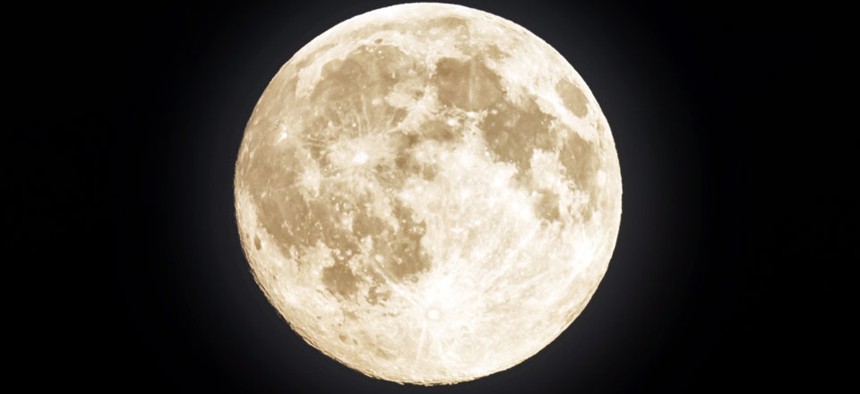New Space Mission: Leave a Time Capsule on the Moon

Stefan Holm/Shutterstock.com
Lunar Mission One will launch in 2024—if enough backers fund the project on Kickstarter.
A decade from now, if all goes well, a spacecraft with a high-tech drill will land in the South Pole-Aitken basin of the moon. There, it will bore 66 feet down into the surface and collect samples of the mantle to bring back to Earth.
But before it leaves, it'll deposit a two-part time capsule: a public part, full of Earth's history, and a private part, full of "digital memory boxes" created by individuals. These memory boxes can hold digital files—records of family trees, videos, selfies even—or actual DNA in the form of human hair. Not everyone can have a digital memory box, though. The boxes are only delivered on behalf of the people who fund the mission on Kickstarter.
The project, called Lunar Mission One and conceived of by British scientists seven years ago, has already taken off on the crowdfunding site, raising more than half of its £600,000 (about $1 million) goal since its launch just a few days ago, on November 19. The founders think that success is thanks to the appeal of both exploring the lunar surface and leaving a time capsule behind.
"It creates emotional significance and it tickles people's fancy. It's an emotional thing," David Iron, the founder of the Lunar Missions Trust, the nonprofit behind the project, tells me.
Lunar Mission One certainly comes at a sentimental time when people are looking back toward the stars. Consider the success of the European Space Agency's Rosetta and the Philae Lander. The mission was a technical feat, but it was also an emotional one, bringing the thrill of knowing something humans built on Earth reached something else in space.
And after all, humans love blasting pieces of themselves—both digital and literal—into space. In 2012, an aerospace company flew science projects carried inside ping pong balls out past the exosphere. The Time Capsule to Mars mission is seeking to bring digital recorded messages to the Red Planet. And space burial is already a thing (only for pets at the moment, but it's really only a matter of time before human ashes will make the trip).
Still, it does seem risky for a backer to donate £60 (about $100) to reserve a digital memory box for a project that won't come to fruition until 2024, if at all. What if the project never takes off after it's funded? What if the technology isn't sophisticated enough? What if those digital memory boxes disintegrate on the moon's surface? And how will anybody ever even know if that happens?
Ian Crawford, a professor of planetary sciences at Birkbeck College in London and a scientific advisor to the mission, tells me not to worry. The plan to leave a time capsule on the moon isn't really about physically leaving something on the moon—it's more an opportunity to encourage people's interest in space.
"I think about the time capsule in a slightly broader way," he says. "There is a lot of educational value in getting people to think about astronomically long time scales and our place in the universe."
Of course, astronauts have landed on the moon several times before. Yet, despite the six Apollo missions that have landed on Earth's closest celestial neighbor, there's still a lot scientists don't know about the moon.
"The lunar surface contains an important scientific history... The time has come to get back to the surface."
Crawford explains that all Apollo missions explored near the moon's equator. The Lunar Mission One will break the pattern by landing in the South Pole-Aitken basin, a deep crater that may for the first time unveil fragments of the moon's interior.
"The lunar surface contains an important scientific history of the moon, of the Earth, and of the inner solar system," Crawford says. "The time has come to get back to the surface and to bring samples back from places the Apollo missions didn't go to."
As the project moves forward, it aims to find supporters from around the globe. The technology for the drill will likely come from the U.S., where the first prototypes for moon-drilling technology were developed, Crawford says. "It's not possible to guarantee success," he admits, "but what is possible to guarantee is to develop extraterrestrial drilling technology that will be enormously helpful to exploring other places and for exploring below the surfaces of other planets."
"Some people say it's not worth it, and that's fine," Iron adds. "But there is an increase in interest in space exploration. What we do is we turn interest into a learning experience, a campaign to learn about science and space and the planet." And those who think it's not worth it, or have no interest in their DNA being buried on the moon, simply don't have to donate to the Kickstarter.
NEXT STORY: Infographic: NASA's Next Rocket





